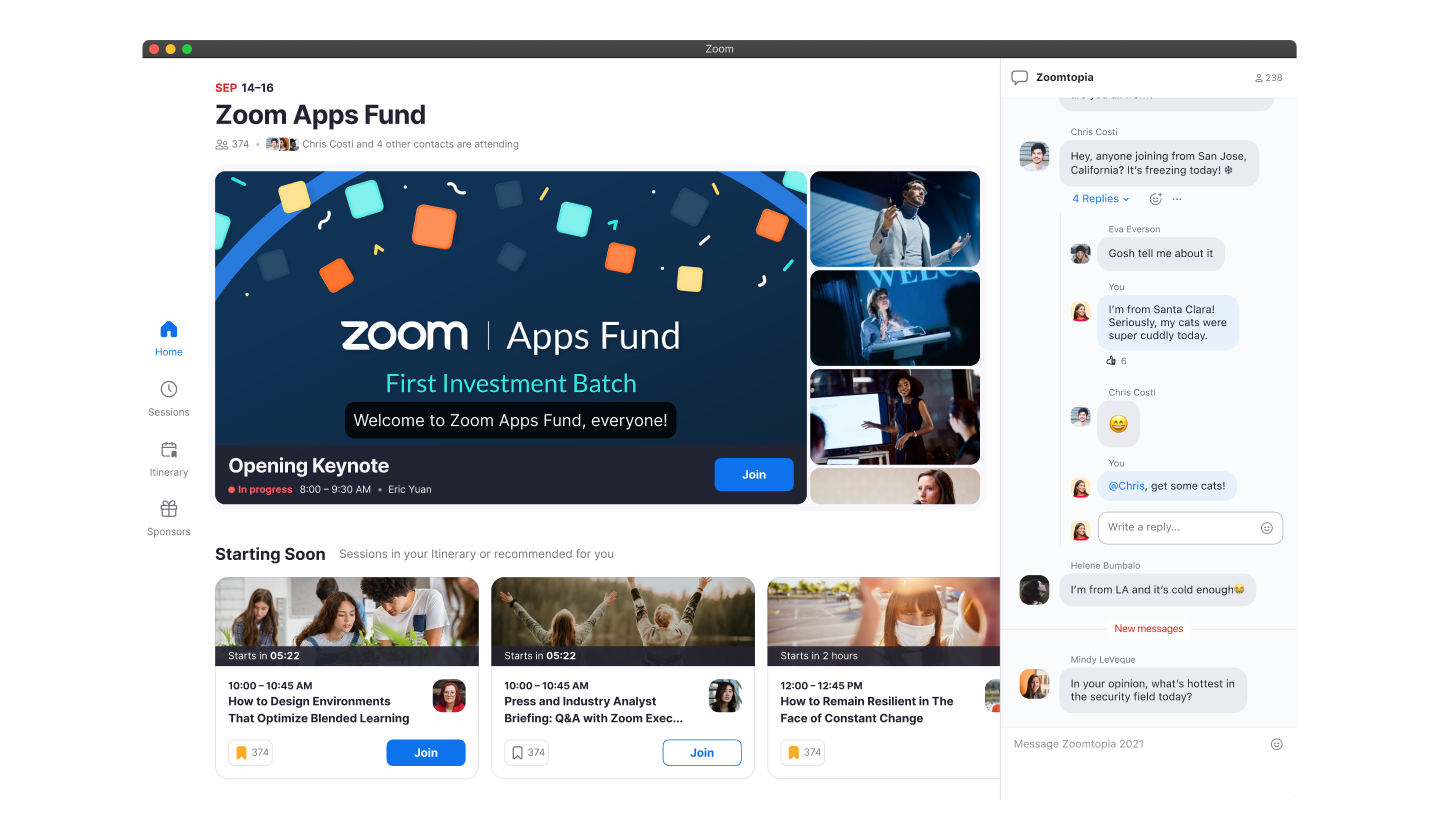The pandemic forced organisers to pivot their gatherings to online in 2020, while the easing of restrictions saw the pendulum swing back to in-person events in a big way. Now, organizers are exploring ways to integrate aspects of different approaches to create events that are more engaging for their customers.
Franco de la Croix-Vaubois, a hybrid event producer and founder of Frog Events, says every event his company has discussed with clients for 2024 includes hybrid elements. Research by Morning Consult and Zoom found that 91% of marketers consider hybrid events an important part of their future planning.
But while demand for events with virtual and in-person elements is increasing, organisers struggle to bring these events to life.
“I saw a lot of chatter and inquisitiveness about hybrid throughout 2023, but I didn’t see a huge amount of it in practice,” says Alex Theuma, the founder of SaaStock, Europe’s largest SaaS conference organiser. “There’s something there that’s untapped, and that we should be doing more of.”
The value of hybrid events
There is a lot of value to hybrid events.
Hybrid events cater to both people who thrive on face-to-face networking, while also continuing to welcome those who aren’t able to attend physically. They also allow people to engage with an event on their terms, creating inclusive spaces for neurodivergent individuals and people with disabilities. They also allow companies to reduce their environmental impact by reducing travel to and from non-local conferences.

Stephane Barnatt, EMEA webinar and events sales leader at Zoom, says that by widening the pool of potential attendees in this way, events organisers can boost engagement in the process.
“If you’re not providing something that can cater for all audiences, then you’re not fulfilling your requirements as an events manager, and this also includes providing the content on-demand” he says.
What you need for a hybrid event
Ticking off basic elements like the ability to record and live-stream panel discussions and keynotes are obvious essentials for a hybrid event. “There is still a big place for a virtual component in networking- and experience-led events, particularly for inclusivity,” says Barnatt “Therefore having a platform that can deliver scalably across these requirements is more significant than ever for an effective events strategy.”
But event organisers must also consider how to make their virtual guests feel like part of the audience. Chat boxes and live polls are simple tools that bring both crowds together, while AI-powered transcription and translation tools can also make an event’s content accessible to as wide an audience as possible.
Zoom says there were 10 times as many virtual attendees to its annual user conference Zoomtopia in 2023 than in 2022, thanks to new technologies that make it easier for attendees to engage. Participants were able to post questions through the Zoom mobile app, for example, for the stage moderators to then put to panellists.
Are hybrid events expensive to run?
Adding a virtual audience to an event does come with an additional cost. But while ultra-high tech solutions like VR headsets and hologram speakers are currently cost-prohibitive, augmenting an event with tech doesn’t have to break the bank.
Croix-Vaubois says that for an £850k event he recently consulted on, the cost of ‘hybridising’ it came to around £40k — around 5% of the overall budget. The most expensive part of this was setting up a separate team to manage the virtual attendee experience.
But, opting for an all-in-one events management platform, like Zoom Events, can help to streamline costs.
“In 2020, we saw huge swathes of suppliers [launching],” Barnatt says, adding that he has known some companies to use as many as 14 different providers to run events before switching to Zoom. “There are very few providers that offer a consolidated, events-as-a-service solution.”
In 2023, Zoom Events announced a partnership with event management platforms Swoogo and Xtag to supplement their all-in-one platform that event organisers can use to manage both the virtual and in-person elements of any event.
These tasks range from making sure people get the right name tags at the venue to streaming live panel discussions and allowing virtual and in-person attendees to message each other.
The data events platforms collect can also help organisers to put on an even better show, by seeing how long virtual attendees tune in for and how often they engage by doing things like asking questions or voting in polls, both in person and virtually
New tools can also make it easier for attendees, both virtual and in-person, to figure out how to manage their schedules.
AI assistants, like Zoom’s AI Companion, can help attendees to figure out who they might want to network with, and give suggestions for how to break the ice with them. They could also provide personalised recommendations for specific talks and workshops that an attendee might be interested in.

Learn how to incorporate AI to boost your 2024 events strategy. Discover how to leverage marketing integrations for optimal investment returns and demand generation. Sign up



